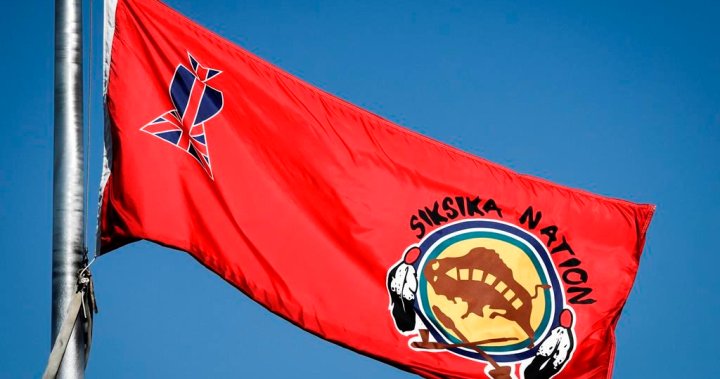The Royal Albert Memorial Museum in Exeter, England, has made the decision to return a ceremonial headdress to the First Nation in Alberta that it originated from. The headdress, known as the Buffalo Woman’s headdress, is set to be returned to representatives of the Siksika Blackfoot First Nation in a ceremony at the museum. The headdress was received by the museum in 1920 from Edgar Dewdney, a former governor of the Northwest Territories. It is unclear how Dewdney acquired the headdress, but it is known that it is crafted with buffalo horns, bird feathers, porcupine quills, red cloth, and brass bells. Research suggests that the headdress is a sacred ceremonial item that was traditionally worn by a member of the Blackfoot Holy Buffalo Woman Society.
This return of the Buffalo Woman’s headdress is part of the museum’s efforts to repatriate First Nations material. The museum has previously returned items such as clothing and regalia once owned by Crowfoot, an important Blackfoot chief, in 2022. This act of repatriation is significant as it reflects a growing awareness and respect for indigenous cultures and their sacred items. By returning these items to their rightful owners, museums and institutions are acknowledging the harmful colonial practices of the past and working towards reconciliation with indigenous communities.
The act of returning the Buffalo Woman’s headdress to the Siksika Blackfoot First Nation is a gesture of goodwill and respect towards the indigenous community. The headdress holds cultural and spiritual significance for the Blackfoot people, and its return is a step towards healing and reconciliation. The ceremony at the museum will be a meaningful occasion where representatives of the First Nation can reclaim this important piece of their heritage. This act of repatriation is an opportunity for museums and institutions to acknowledge the historical injustices faced by indigenous peoples and commit to supporting their efforts for cultural preservation and revitalization.
The repatriation of the Buffalo Woman’s headdress highlights the importance of honoring indigenous knowledge and traditions. By returning sacred items such as ceremonial headdresses to their rightful owners, museums and institutions are recognizing the value and significance of indigenous cultures. This act of repatriation also raises awareness about the need to protect and preserve indigenous cultural heritage for future generations. It serves as a reminder of the ongoing work needed to address the legacy of colonialism and support the cultural autonomy of indigenous peoples.
The return of the Buffalo Woman’s headdress is part of a broader movement within the museum sector towards decolonization and repatriation. Museums are increasingly recognizing the importance of engaging with indigenous communities and addressing the legacy of colonialism in their collections. By actively working to repatriate cultural objects and sacred items, museums are taking steps towards rectifying past injustices and building more respectful and equitable relationships with indigenous peoples. This act of repatriation reflects a commitment to reconciliation, cultural revitalization, and healing for all parties involved.
Overall, the return of the Buffalo Woman’s headdress to the Siksika Blackfoot First Nation represents a significant moment in the ongoing process of reconciliation between museums, institutions, and indigenous communities. By acknowledging the cultural and spiritual significance of indigenous artifacts and supporting their return to their rightful owners, museums are contributing to the preservation and revitalization of indigenous cultures. This act of repatriation serves as a powerful symbol of respect, understanding, and solidarity with indigenous peoples, and highlights the importance of centering indigenous voices and perspectives in discussions on cultural heritage and preservation.


